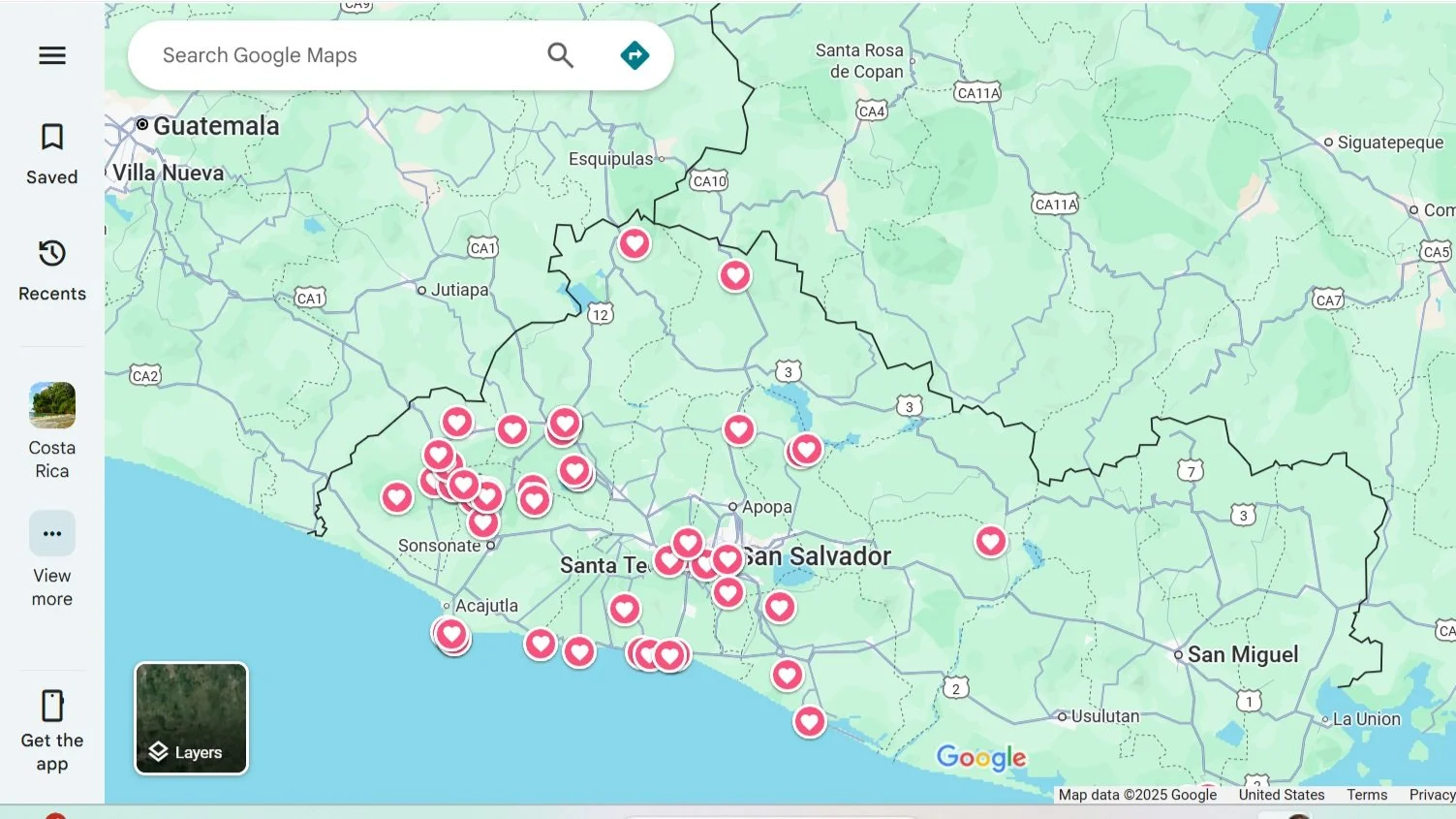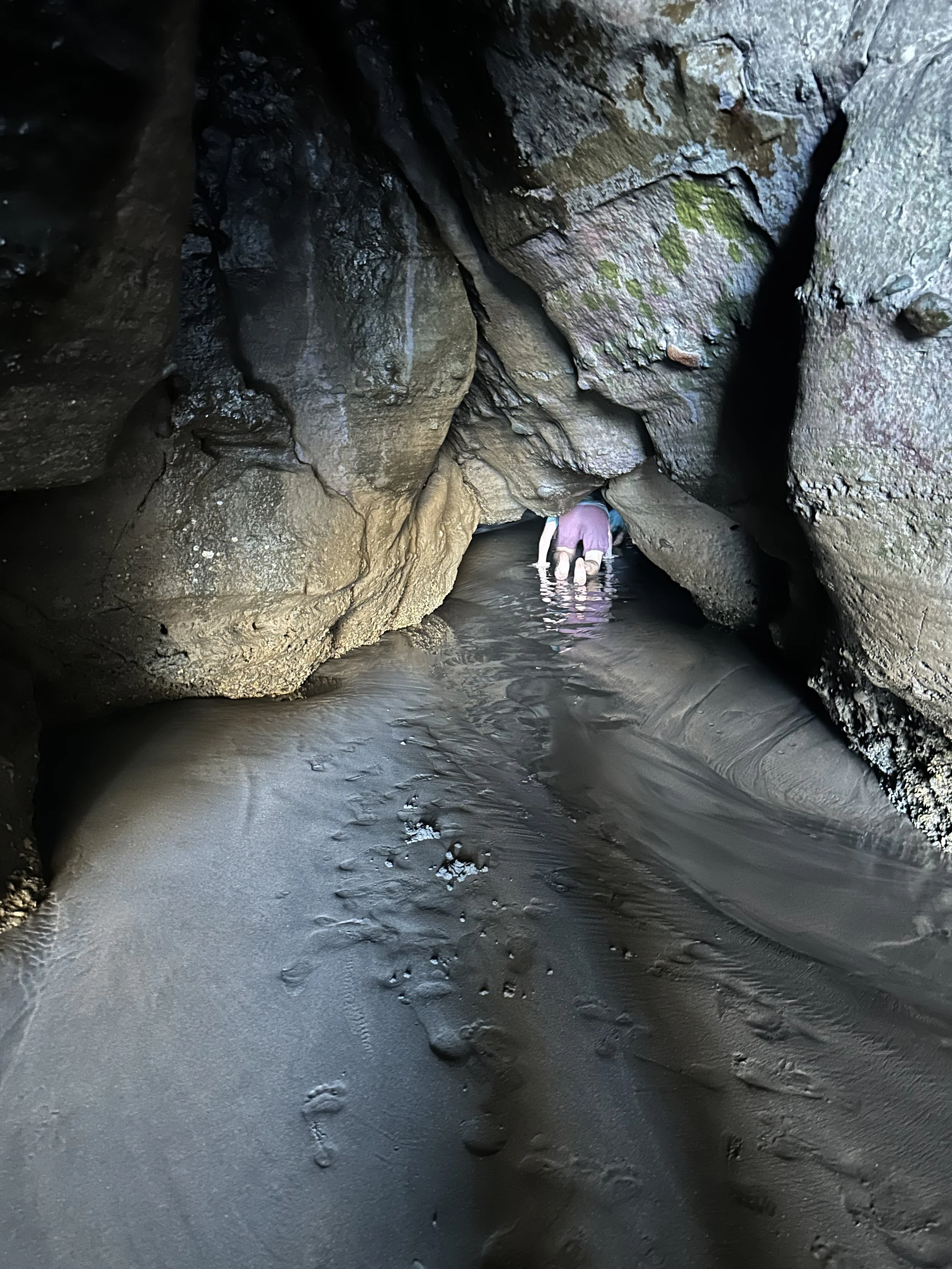Planning & Packing
Planning Family Vacations
When deciding where to go on vacation, one of our favorite tools to start with is Kayak’s Explore tab. It’s an interactive feature that lets you input your departure airport and either select exact travel dates or simply choose a specific month. From there, you can browse flight deals around the world—visually—making it easy to compare destinations and spot unexpected opportunities.
We love using this tool to find places that are new to us, but that also align with our trip goals—whether that’s a beachy tropical getaway or a mountain-based ski adventure. It’s especially useful during school breaks when you’re tied to a specific week, or during summer months when your schedule may be more flexible and you’re looking to stretch your travel dollars further.
You can also set Kayak alerts to monitor price changes for destinations you’re considering—notifications go straight to your email so you can pounce when a deal pops up.
Thanks to this method, we’ve scored roundtrip flights to ski in Europe for less than it would’ve cost us to fly to Salt Lake City or Denver. It’s one of our favorite hacks for planning budget-friendly, bucket-list-worthy family vacations.
Mapping Out the Adventure: Using Google Maps to Plan Our Days
Once we’ve settled on a destination, the next step in our planning process is to dive deep into what the area has to offer. I start by using Google Maps to pin key sights, attractions, and activities around our chosen location. This visual mapping helps me get a sense of geography and how much time it might take to travel between spots, making our itinerary more efficient and realistic. I also make sure to pin playgrounds, ice cream shops, and unique toy stores—little spots that help keep the kids engaged and happy throughout the trip. These fun, kid-friendly stops are essential for balancing sightseeing with downtime and ensuring everyone stays energized and excited.
To uncover the best experiences—especially those off the beaten path—I turn to Instagram and search relevant location hashtags or travel influencers who focus on that area. Instagram’s real-time photos and stories give a fresh, candid look at what’s worth visiting, as well as seasonal events or temporary exhibits that might not be widely advertised.
Travel blogs are another goldmine for detailed advice and honest reviews from families who’ve been there before. I specifically look for blogs or posts that highlight family-friendly activities, kid-friendly restaurants, and practical tips for traveling with children.
Facebook groups dedicated to the destination are invaluable for real-time, community-sourced recommendations. These groups often include locals and frequent travelers who share hidden gems, lesser-known spots, or timely advice about safety, accessibility, and the best times to visit. I’ll often post a question in these groups outlining our vacation goals—whether it’s relaxing beach days, cultural excursions, or outdoor adventures—and mention the ages of our kids. The personalized suggestions we receive help tailor our trip to fit our family’s needs perfectly.
This research phase not only enhances our itinerary but also builds excitement for the trip. It ensures we strike the right balance between must-see landmarks and authentic local experiences, making our vacation both memorable and manageable. In fact, one of our favorite discoveries during our trip to Roatán came from a Facebook group recommendation—a tiny, tucked-away restaurant with just four tables and the most charming hummingbird feeders overlooking the sea. It wasn’t on any blog or guide, but it ended up being a highlight of our trip—we ate there twice, and the kids are still talking about the hummingbirds.
Where to Stay: Finding Family-Friendly Accommodations That Work
Once I have pinned all the key sights, attractions, and kid-friendly activities on Google Maps and gathered input from travel blogs and Facebook groups, I use this map as a critical tool to decide exactly where we want to stay during our trip. This step is especially important when traveling with young children, who often have limited stamina for walking or long transfers. Choosing accommodation close to our planned excursions helps minimize travel time, reduce fatigue, and maximize the time we spend enjoying the experiences rather than stuck in transit. It also means easier access to the essentials like restaurants, grocery stores, and playgrounds, which can be lifesavers with little ones.
When it comes to lodging, I almost always opt for vacation rentals over traditional hotels. There are several reasons for this preference, starting with the simple but vital need for sleep. Traveling with kids can be unpredictable, and having separate bedrooms ensures that when one child goes to bed early or has a rough night, it doesn’t disturb the rest of the family. Quiet and comfort are priceless, especially on vacation. Air conditioning is another non-negotiable feature for us, particularly when visiting warm or humid destinations. Cool, comfy sleep makes all the difference when it comes to feeling rested and ready for whatever adventures the next day brings.
Another practical benefit of vacation rentals is having a washer and dryer. Being able to do laundry mid-trip means we can pack lighter and avoid lugging around bulky suitcases. It also allows for quicker turnaround if the kids spill something or need a fresh set of clothes unexpectedly. This convenience often translates into less stress and more flexibility in our daily itinerary.
A kitchen is an absolute game-changer for family travel. It allows us to prepare breakfasts at our own pace—perfect for avoiding the typical rushed hotel buffet chaos and keeping hangry kids at bay. Since mealtime rhythms often vary from place to place—especially in Europe, where restaurants may open later and food service is more relaxed—it’s a huge relief to have the option to feed the kids early or provide a second breakfast if needed. Packing lunches for excursions is another huge plus. When you’re out exploring, it’s not always easy to find family-friendly restaurants or quick meal options, so having homemade snacks and meals on hand helps prevent meltdowns and keeps everyone energized.
And since we usually stay in vacation rentals instead of hotels, we’re not limited by space or amenities. That means we can pack more of the things that make traveling with kids easier—like our trusty white noise machine, resistance bands for quick workouts, and a mini medicine kit just in case. These small comforts from home help everyone feel more settled and keep our days running smoothly. Check out our travel essentials to see what always comes with us on every trip.
Finally, I seek out vacation rentals that offer a more authentic or cultural experience whenever possible. Whether it’s a host who prepares traditional meals, shares local recipes, or offers insights into the neighborhood and its history, these personal touches turn an ordinary stay into something memorable and unique. It’s these moments—connecting with local culture in a meaningful way—that enrich our travels and give our kids a broader understanding of the world around them.
One of our favorite examples of this was at Punta Elephante in El Salvador, where we had not one, but three amazing hosts—a private chef, a groundskeeper, and a concierge who helped with groceries and excursions. This added layer of support was incredibly helpful, especially on the days we wanted to relax at home and enjoy an authentic meal without the hassle of going out. One afternoon, our host even took us on a personal tour of the nearby sea caves once the tide had gone out—an unforgettable highlight we wouldn’t have discovered on our own.
Building the Itinerary: Organized, Flexible, and Family-Friendly
Once our excursions are booked and vacation rental or hotel is confirmed, I shift into itinerary mode. I use Google Drive to keep everything organized in one place—flight confirmations, excursion receipts, car rental details, and any other travel documents all get saved into a dedicated folder for the trip. It’s accessible from my phone or laptop, and I can easily share it with family members or travel companions.
Then, I create a day-by-day itinerary that serves as our flexible trip roadmap. I include each day of the week, list our scheduled excursions, and highlight which activities are set in stone and which can be booked last-minute depending on how the trip unfolds. For each excursion, I add helpful details like:
Opening and closing hours
Estimated time we’ll spend there
Nearby breakfast, lunch, or dinner spots
Travel time from our rental or previous activity
Having all this info mapped out ahead of time helps minimize decision fatigue during the trip—especially with young kids who aren’t fans of waiting around while the adults figure out what’s next.
I also make a point to plan just one major excursion per day. That way, we have the flexibility to add a park, beach stop, or museum visit if the kids are up for it, or simply head home for a nap or pool time if they’re running out of steam. Building in this kind of flexibility keeps the trip enjoyable and avoids the dreaded meltdown that can come from trying to pack too much into one day.
With the itinerary organized and a solid plan in place, the groundwork is laid for a stress-free, fun family vacation. Having this roadmap means less time scrambling to make decisions on the fly and more time soaking in those special moments together.
Now that you know how we approach planning and organizing for family travel, it’s your turn! Start small, stay flexible, and watch your trips become smoother, happier, and full of unforgettable memories. Happy travels!
Packing for Family Vacations
How I Pack for Family Travel: My Step-by-Step Process (Plus Our Must-Have Travel Essentials)
Whenever a trip is on the horizon, the first thing I do is create a packing list. This is my foundation—a running brain dump of everything we might need, from clothes and toiletries to gear, snacks, and the random little comforts that help travel feel more like home.
To keep it flexible and easy to update, I make the list in Google Drive. That way, if I remember something while I’m out running errands or lying in bed at night, I can pull it up on my phone and add it instantly. It’s one of those small systems that has made travel prep so much smoother.
Once my master list is built out, I start editing. I go line by line, asking myself:
Do we really need this? Is there a lighter or smaller version? Could we do without it entirely?
That process is always heavily influenced by whether our destination offers laundry. If there’s a washer and dryer at our rental, I can pack lighter and plan to refresh clothes halfway through. If not, I get strategic—especially with the kids.
Packing the Kids First
The kids are always first on my packing priority list. I use one compression bag per child, and it’s been an absolute game-changer. Inside each bag, I pack one outfit for every two days (plus a backup or two just in case). But the real magic? It’s how I fold the clothes.
I roll the bottoms into the shirts to make bundled outfits—little packages that are super easy to grab. This makes mornings so much smoother, especially for Dad when he's helping get them dressed. No searching for matching pieces, no second-guessing what goes together.
To make it crystal clear whose bag is whose, I take a piece of computer paper and write their name in Sharpie, then slide it into the bag before sealing it. Simple, but effective.
Suitcase Strategy
Depending on the airline, Clayton and I either pack separately or consolidate. Most of the time, I’ll use one large hard-shell suitcase for myself and the kids, while Clayton has his own bag. We’ve found this setup keeps things more organized and allows for some flexibility if we need to redistribute weight at the airport.
Kid Carry-Ons: Their Own Little Survival Kits
Each kid gets their own carry-on luggage or backpack. Inside goes:
Their tablet
Wireless headphones
One lovie
A full change of clothes
Snacks
Because we often take early morning or late evening flights, the kids are usually either already wearing pajamas or have them packed for an easy transfer once we arrive. It’s one of those little routines that makes bedtime at the destination way less chaotic.
Speaking of chaos—after one particularly memorable customs line experience where one of our kids had a potty accident (yep, right there in the middle of the line), we now always pack a change of clothes for each kid in their carry-on. Lesson learned the hard way.
My Personal Carry-On
I also pack a change of clothes for myself in my carry-on, just in case of delays, cancellations, or misplaced luggage. I include the non-negotiables:
Glasses
Contacts
Toothbrush & toothpaste
A small set of toiletries
Face wipes
It’s basically my overnight survival kit—just enough to get through one night comfortably if we get stuck somewhere unexpectedly.




